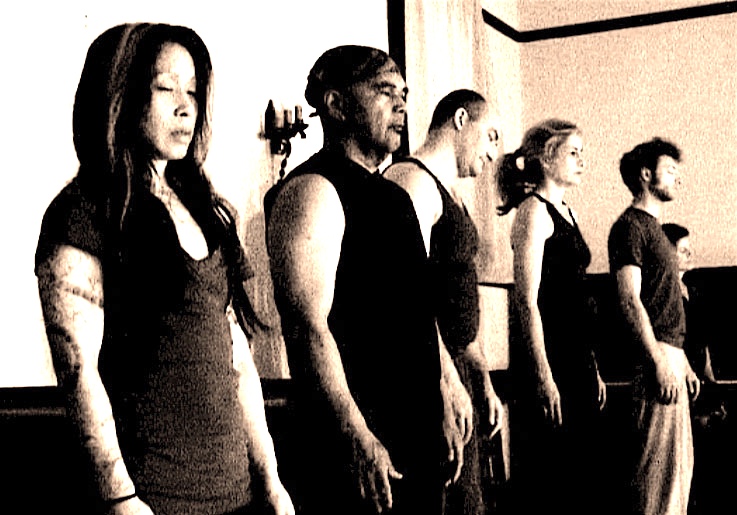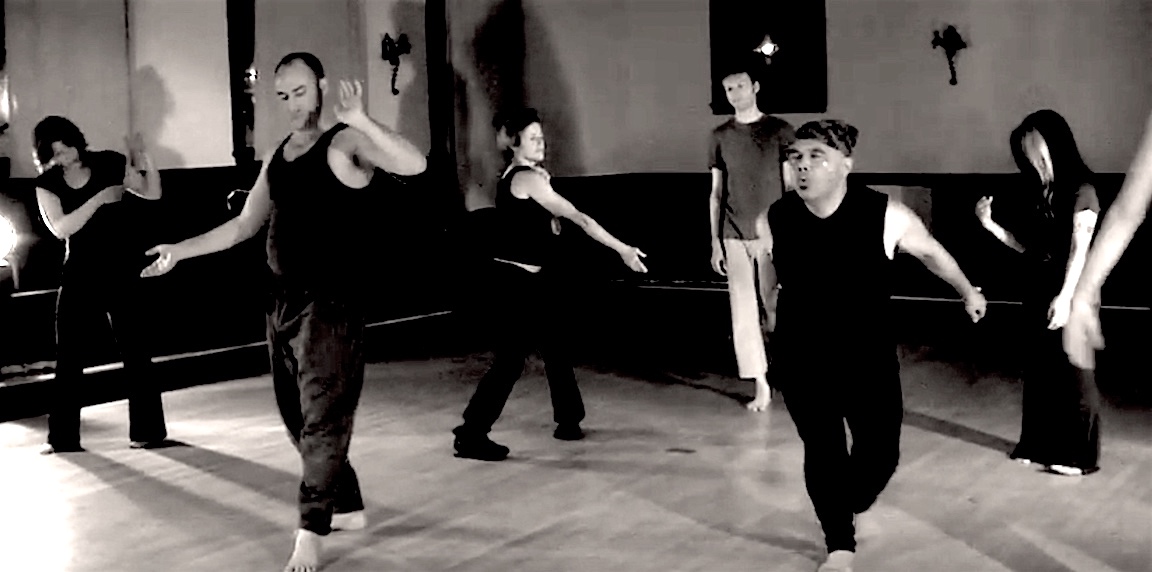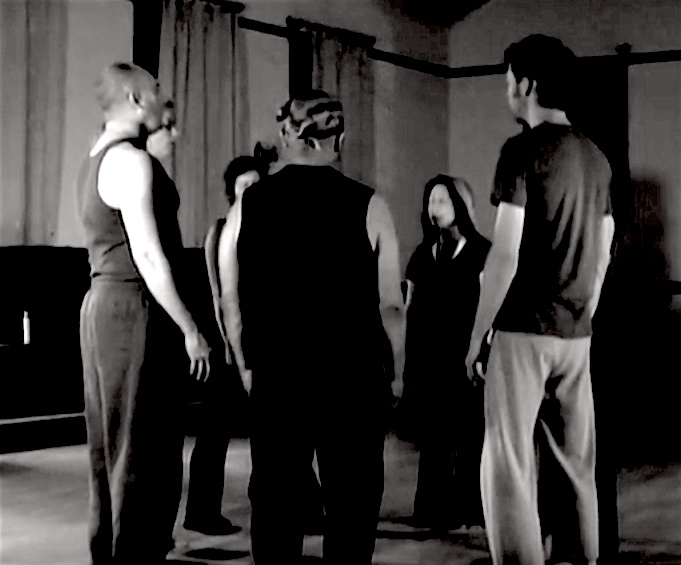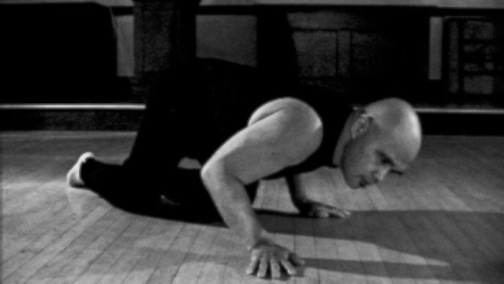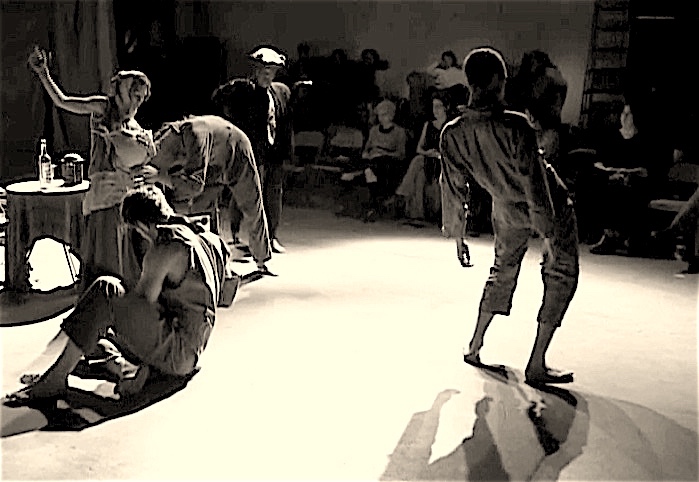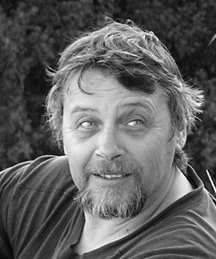The Theater of No-Form
Antero Alli in Conversation with R.U. Sirius
for NEOFILES, Summer 2004
Antero Alli is a cherubic and intense technician of ecstasis and personal transformations. Operating primarily under the rubric of experimental theater, Alli specializes in personal/interpersonal/group dynamics within a ritualistic context. Influenced by “paratheatrical” ideas introduced to the world by Jerzy Growtowski, Alli’s theatrical groupings are “asocial” laboratories — experiments in human and group consciousness. Alli studied method acting at the famous Lee Strasberg Theatre Institute in Hollywood. Since the late 1970s, he has been organizing “private ritual labs”, some of which mutate into live performances. I conducted this conversation by email after reading his most recent book (written “with friends”), Towards an Archeology of the Soul: a Paratheatrical Workbook. -- R.U. Sirius
R.U. SIRIUS: Your theater seems to be more directed at challenging and transforming the performers than it is with putting on a great performance or even changing your audience. Would this be accurate? How did you come to this place in your own life and philosophy?
ANTERO ALLI: It would be misleading to call what we do “theater” as most of our work occurs behind closed doors without an audience and for non-theatrical reasons. What we do may be closer to the early paratheatre and “theatre of sources” work of the late Jerzy Grotowski, circa late seventies, but even this is not quite accurate. None of us are acrobats. Also, the medium we work in, which I have been developing since 1977, leans heavily on a standing Zazen meditation technique we call No-Form, something Grotowski did not utilize. Occasionally our private work develops characters or a theme or mythos that, with further distillation, ripens for public offering. This happened with our 2004 performance experiment, “Orphans of Delirium.” It’s a story of eleven sub-types within the psyche of an actor that wreck havoc as he undergoes an absinthe binge. Hallucinagenic symbolist theatre. Coleridge’s delirious epic “Kubla Khan” was also incorporated as an oblique narrative randomly spoken by the wildly talented Serene Zloof as she embodied the hallucinating intellect of the actor.
Maybe only 25% of our work sees the public; the rest is devoted to private research. When we are ready to raise the bar from private ritual to public performance, you are correct in assuming we are not out to put on some great performance or change the audience. Unlike theatre, our aim is neither to entertain nor to educate but rather ... to fascinate ... to fasten audience attention to the flow of spontaneous physical eruptions and their ever-molting expressions of emotion passing before your eyes. The results are visceral, unpredictable, convulsive, and sometimes violent. But we don’t hurt each other. It’s more like we’re giving expression to the raw force of violence in less literal, more abstract ways. With or without an audience, our aim is to execute rituals with enough force of commitment to trigger our own most resonant responses to what we are doing. Our research is discovering how these forces act on us. If our force of commitment is complete enough, we believe it can elicit spiritual and visceral resonances in an audience. I’m not interested in changing the audience as much as setting up a kind of climate of seduction for inciting their own impulses. For us, it’s more about participating in — and maybe sharing — a spiritual event.
My overall philosophy mirrors Hakim Bey’s “Immediatism.” Moments of minimal mediation are sacred to me. Imagine living without a self-image ... how straight up and direct can your perception get? Paratheatre work acts as a lab for testing my perceptions by its corrosive effects on the ego and its past diet of social conditioning. This work employs a “via negativa” approach to exposing and exfoliating dead layers of beliefs, concepts, values, and ideals absorbed from the default culture at large. We are approaching the power of our most naked experience. This process can be a bit disconcerting at first and why this work is not for everybody. Not everyone wants or needs to outgrow the brittle shell of their false self and take flight in rebirth. We are actively engaging an iconoclastic process of destroying images -- self-imposed and those we wear as cultural badges and identities -- towards liberating more spontaneous expression of innate being.

from "Orphans of Delirium" (2004 San Francsico; performance)
RUS: You create rituals that seem to emerge from somewhere within your own consciousness and perhaps that of the group. Do you have some means, or some criteria through with you validate some rituals as being worthy or effective and others as not working?
AA: Those criteria come from knowing the difference between what is mechanical and what is alive. For example, the numerous rituals organized in my book, Towards an Archeology of the Soul, were developed and tested over three decades of active paratheatre work. However, they’re not guaranteed to automatically function for anyone who tries them. What renders any ritual effective or ineffective is preparation. What you put into it is what you get out of it. Effective preparation in this ritual medium begins with a silent pledge everyone makes to be accountable for: 1) his or her own safety and 2) for his or her own creative states. Anyone unwilling to take this vow of autonomy is warmly discouraged from doing this work.
The next criteria is instigating and maintaining an asocial climate, or “rare area”, to minimize the sway of social considerations — like flirting or wanting emotional support or approval or to make friends — that can inhibit real creativity by crimping our more honest responses. For some, this asocial adjustment can quickly become a source of frustration and annoyance or anxiety if they can find no other reasons to be in the room with others than trying to satisfy their unmet social needs. One way to instigate asocial intent is through any action that amplifies spatial awareness. We do this by a ritual we call "space-forming" which amounts to moving throughout the room and relating only to the space itself, the space between people rather than the people themselves. What results is a discovery and respect for the space between things and people, rather than automatically reacting to everybody’s personalities, and how that influences the way we relate with each other. With practice, this spatial awareness lends itself to a greater regard for the personal space of others and introduces a higher quality of interpersonal intimacy. When your own personal space is respected by another, it is natural to respond with more trust and openness.
RUS: Can you describe some of the results individuals and groups have gotten from the rituals? Do you see people permanently changed? Temporarily energized? Any breakdowns?
AA: How people have been influenced by this work varies. I think the primary way this work affects the participant's
sense of identity is through an amplified awareness of the
existing conditions of their lives and recognizing the internal
landscape as a legitimate source of spiritual authority and autonomy. Due to the high level of self-commitment required to actually do this work over several months at a time, most participants confess to tangible changes in their lives. These often involve adjustments in attitude, redefinitions of values and beliefs, expansions of personal movement vocabulary, and various kinds of spiritual epiphanies and breakthroughs.
Those who continue work in this medium experience a certain transformation at the level of their Central Nervous System in ways similar to, but differing from, Kundalini yoga. Because we work with the direct engagement of real energies and living forces -- not just concepts -- the CNS gradually becomes more engaged and sensitized. This type of change also brings its own kind of responsibilities. Many of us live in a hyper-media society where our CNS can easily numb out and dumb down. There is very little external support for developing this kind of intuitive and visceral sensitivity. That support must come from within and from those who share in this process of awakening. Without a strong support system, this work can also push people into self-delusion and other pitfalls common to transformative ritual work.
Each paratheatrical lab meets for about two months (once or two nights a week) and pivots around a theme that shapes the nature of the group experience and outcome. The lab theme for "Orphans of Delirium" was “initiation. We explored ritual forms for triggering exposure to direct experience of states of consciousness we had never known before and for which there was no previous reference or maps. True to form this lab produced volatile results that were soon directed into the development of the performance vehicle of “Orphans of Delirium.” Other themes have included “anima/animus” (which opened our eyes to our current and future loves), “ancestors” (which opened our hearts to those who have lived and passed before us) and “trinity” (triadic ritual structures for exposing and expressing each person’s “holy trinity” of sources that are holding them together).
The results of each ritual lab varies and are determined by the commitment shown in three areas: 1) the physical warm-up, the No-Form states, and 3) acceptance of the existing conditions of the internal landscape. The first event involves the degree of commitment shown to a 5-phase physical warm-up, which everyone designs and executes in their own idiosyncratic ways, simultaneously. These five phases last about six minutes each and reflect five objectives: physical stillness, flexing the spine, working the core, stretching the muscles, and breaking a sweat. The overall objective of this warm-up is meeting the body’s central-most need to be felt deeply. When this need is met, the physical energies are raised and the body shows less resistance to change.
CLICK THIS TO WATCH A VIDEO OF THE 5-PHASE WARM-UP
Something about No-Form: either people already have an existing relationship with void, or the potential state, or they don’t. And I’m speaking of No-Form not as an idea but as an experience. Those that do connect with the potential state usually take to this No-Form technique like fish in water. It amounts to a certain comfort around being nothing. Those unfamiliar with or threatened by this intimacy with void often meet with immediate frustration. They freeze up. No-Form refers to a kind of free-floating, concept-free zone and is at the very crux of this ritual technology. We are courting realities and living forces rather than concepts and ideas about those realities, though these will also emerge since there is nothing we can do to stop thinking.
For those who find this experience of No-Form unfamiliar, an external catalyst, or transmission, may be required from a talented facilitator. This facilitator will have a talent for inciting the No-Form experience in others. As with any real talent, I don’t think it can be learned like a skill can be learned. You either have it or you don’t. The quality and depth of your No-Form experience tends to determine the quality and depth of your results. Now the exact nature and substance of your results will invariably be shaped by how the first two events support, or don’t support, the evocation of the third event ... the internal landscape.
If you can honestly perform these three events with your full commitment over and over again, it will probably change your life. It can be very effective that way. Whether the change is permanent or temporary depends on the existing conditions of your life — your support system, your ego-structure, your health — coupled with the extent of your integrity and self-honesty. We work within a sanctified container to experiment with and to test ourselves. Some people, like me, have used labs as a metaprogramming device to break down old habits and programs towards rebuilding greater authenticity of response. But the more common motive is doing the work for more hedonic reasons — to get high or to trance out.

from "CRUX" , a private paratheatrical experiment (1999, Berkeley)
I look at paratheatrical research as a kind of archeology of the soul. From my vantage, we live in massively soul-deadening times and have to dig deep if we are to mine the veins of spiritual energy. Not everyone wants to do that or even can do that. This work is not for everybody. Maybe 1% of the population would or could do this, and that’s a generous assessment. So we’re, by default, engaging an elitist technology. The purpose of our paratheatrical forms and designs are to evoke, expose and excavate the internal landscape ... that complex layering of memories, fears, desires, fantasies, dreams, complexes, social conditioning, and the more autonomous, archetypal dynamics connecting our personal lives to larger collective shifts.
Why do we do this ? We do it to access these dynamics as movement resources, as energies that animate our actions, sounds, gestures and the development of new rituals. We bypass any psychological interpretation or analytical treatment of these complexes and interior dynamics in lieu of turning to them as spiritual events. When related to simply as sources of energy, the leylines of our internal landscape avail themselves as vital movement resources. I am not interested in analyzing myself to death but with bringing myself to life.
You ask about breakdowns. Due to the emphasis on individual pacing, these rituals are never rushed. That’s probably why I haven’t seen any serious breakdowns or psychotic breaks. Except once. There was this young Catholic woman whose paratheatrical experiences shocked her lifelong religious beliefs. She suddenly turned on the group, and me especially, with vehement satanic accusations. She was in the grips of some kind satanic panic. I knew she was fighting to hold onto her beliefs; and to do that she had to make me “the devil.” I hate when that happens. I calmly suggested that she leave the dance studio and stop working with us. She stormed out screaming “devil worshippers!” Later on, I heard that she told her friends about her narrow escape from an evil cult. That was a close call for us, too. I do feel a deep responsibility to this work and to the people doing it and have implemented a screening process to weed out potentially unstable personalities. You have to be 24 years or older, in good physical health and have your basic survival needs met -- food, shelter, income -- before I agree to work with you. Survival needs also includes friends and a social life outside of the lab.
CLICK THIS FOR MORE ON THE DANGERS OF PARATHEATRE
RUS: One phrase in your book particularly caught me. You write “Discover movement as nourishment.” What is being nourished and how does movement most effectively become nourishment.
AA: Movement-as-nourishment is a kinetic adjustment often applied in the physical warm-up cycles to infuse more pleasure into stretching the muscles and breaking a sweat. It’s a non-directional mode allowing expression of the body’s own impulses and rhythms, rather than imposing one’s will over the body, as with ballet and yoga, which are more “mind over matter” directional modes. What is being nourished is receptivity to body wisdom and the self-awareness to detect and serve the organism’s innate impulses without immediately trying to control or direct them. Movement-as nourishment is one device that paves the way there. Movement-as-nourishment is actually a fusion and distillation of two American Mime techniques I learned from Keith Berger over thirty years ago called “motivated movement” and “moving to words.” These were used to prepare us for entering a creative state. Keith learned them from Paul J. Curtis, artistic director of the American Mime Theatre in New York City.
Surprisingly, what can also become nourished with this technique is the intellect. As the conceptual analytical mind develops more receptivity to the body’s own distinct voice, the intellect learns to either wise up or shut down inside its cocoon of false certitude and arrogance. An intellect wises up after being humbled enough by the consistent exposure to the body’s innate truths. The body never lies; it’s the only part of us that’s always in present time. The mind lies all the time; it’s rarely in present time unless it wises up to the body. The newly humbled intellect learns to pay closer attention and increases its powers of observation and perception. Many intellects are too arrogant to wise up; in the face of the greater intelligence of Body Wisdom, they save face by self-denial and the painful solace of stupidity.
RUS: Another nice quote: “Economy of motion is not the same as repression.” I’m thinking that there’s graceful release and not-so-graceful release. Can you expand on this idea?
AA: “Economy of motion” stems from another skill I initially learned from my very early Mime training with Keith Berger. Since then, I have applied it to the paratheatrical work of extracting from the raw, messy primordial noise of self-expression, a series of patterns — patterns of motion, gesture and sounds — that actually begin to communicate something. It’s a distillation process involving pattern recognition amidst the chaos of impulses aroused in the ritual preparation cycles.
By the way, grace is not the goal in our work. Grace can be an impediment, in the way too much structure, finesse or refinement can crimp spontaneity. On the other hand, too much free-form spontaneity can disintegrate into this group soup effect which is also quite worthless. The really valuable work results from maintaining a dynamic tension between high performance skills and raw creative talent, which can only be sustained for fifteen minutes at the most, the way we work. When it does work, it’s miraculous ... a miraculous interaction of self-governing bodies ...
In the first stages of any ritual lab, we tend to allow lots of space and time for not-so-graceful releases of outright catharsis and the blathering, blubbering blows of emotional surrender. We do this to gain more direct access to the sources of power we are excavating.
Another technique, similar to movement-as-nourishment, is “cellular choreography.” This direction represents more advanced paratheatrical work in that the intellect has, by now, learned to yield and serve innate patterns of motion expressed through the body’s impulses. The forms, shapes and movement designs that emerge are totally unplanned and spontaneous. Not spontaneous as in frenetic and chaotic but fluid, graceful, and unhindered. This technique also requires a very strenuous physical and emotional warm-up process to activate a second wind exhaustion state assisted by our friends the endorphins.
Our aim at this point is simply subjecting ourselves to these energies without trying to shape, control or direct an outcome. Though we do not allow auditors in our lab work, any casual outside observer could easily mistake this phase with a roomful of raving lunatics in an insane asylum. A real sense of danger and emergency cuts the air. After these initial primordial phases have their way with us, we gradually start the distillation process by honing our overwrought expressions down to their most basic essence. This also begins the more advanced paratheatrical work that demonstrates “how economy of motion is not the same as repression.”
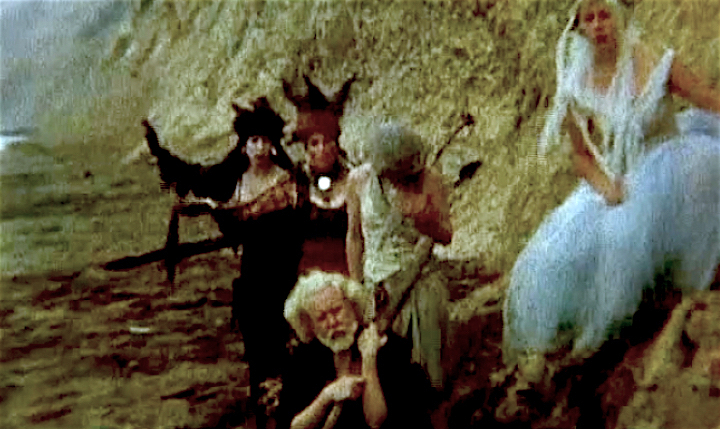
"The Invisible Forest" (2008) paratheatrical experiment in film
RUS: You mentioned Hakim Bey’s Immediatism and have otherwise criticized our mediated society. You also clearly love cinema, and have been involved in it yourself. So what is your take on “virtuality” and what is it that you love about cinema?
AA: Virtuality, in all its morphing forms and myriad enterprises, is our future because it is already a way of life for the millions who have cocooned — they have made a home in their minds and are becoming mental domestics. Mental domestics, the hot new demographic! I don’t know exactly when it started but I’ve noticed this epidemic, a kind of new mental illness, let’s call it schizapression, that leaves the mind in a state of perpetual bewilderment around what is real and what is symbolic, as if they’re more fused, confused, in the mind. More people are confusing their thoughts for actions and their emotions for experiences. I see more people thinking or talking about doing something and never getting around to actually doing it. Or people over-reacting to almost anything just to create an experience to feed their meaning-starved souls.
I’ve detected this virus in the local language, too, in the way we speak, especially this avoidance of using first person pronouns to express any experience that is actually personal. The pronouns “I” and “me” are being rapidly replaced by “you” or “we” or “most people.” This, to me, reflects a larger collective wave of depersonalization. Accordingly, all virtual reality technologies; VR porn, and top secret military VR applications will reap massive economic harvest from the virtualization of humanity, but there is a tragic cost when the human body, and the direct experience of life it affords, grows obsolete in the name of that progress.
The bright side of virtuality is a resurgence of creative imagination, that is, for anyone still possessed of one. This means the programmers, which includes anyone creating or producing more meaningful media than they are consuming. Successful media makers and media producers have Strangest stimulate their imaginative faculties just to keep updating program content. The closest I get to programming is filmmaking; and though I usually write, direct, and edit my own stuff, the actual production process involves serious teamwork with actors, crew, venues, etc.
What I love about cinema are the poetics of it, the way the medium conveys texture and subtle nuances and memory with a simple moving image, sound, light. It’s really quite staggering. I love how I am able to communicate complex visions through my films. My chief influences are visionary filmmakers — Tarkovsky, Herzog, von Trier, Wenders, Jodorowsky, Maddin — whose works transport my consciousness.
I love the way each of my own films represent a different adventure and journey, first for my crew and me and then for the audience. Paratheatre techniques were used and also demonstrated in my 2003 feature, Under a Shipwrecked Moon which follows a self-styled shamanic punk rocker performing extreme rituals with DMT to catapult his consciousness into the spirit realm in search of his father who drowned at sea. In 2002, I made my post-9/11 statement, Hysteria, about a Catholic soldier who mistakenly drinks datura tea and hallucinates a vision of the Virgin Mary who grants him a divinely dangerous mission. In 2000, I made “Tragos”, a cyber-fi feature about an urban tribe of techno-pagans practicing their ecstatic rituals in a VR program, until one of them uses the device as a suicide machine. This, in turn, sparks a modern day witch hunt. Technically, I shoot in various mediums of digital video and high-speed super-8 film and then, edit on Final Cut Pro.
On a closing note, I think it's important to say here that most of the seed ideas for my films have emerged through the hard-earned excavation processes of our paratheatrical research work. I honestly do not know what I am going to do next or what idea or vision will spring forth next from the vertical wellsprings of the internal landscape. It's a mystery to me. Beyond the spiritual and self-work aspects of paratheatre I also do it to stay in touch with the Muses, those autonomous numin of archetypal design, that come and go beyond my control and comprehension and, that act on my life as a calling. - AA
Paratheatre Manifesto by Antero Alli
Other Interviews with Antero on Paratheatre
